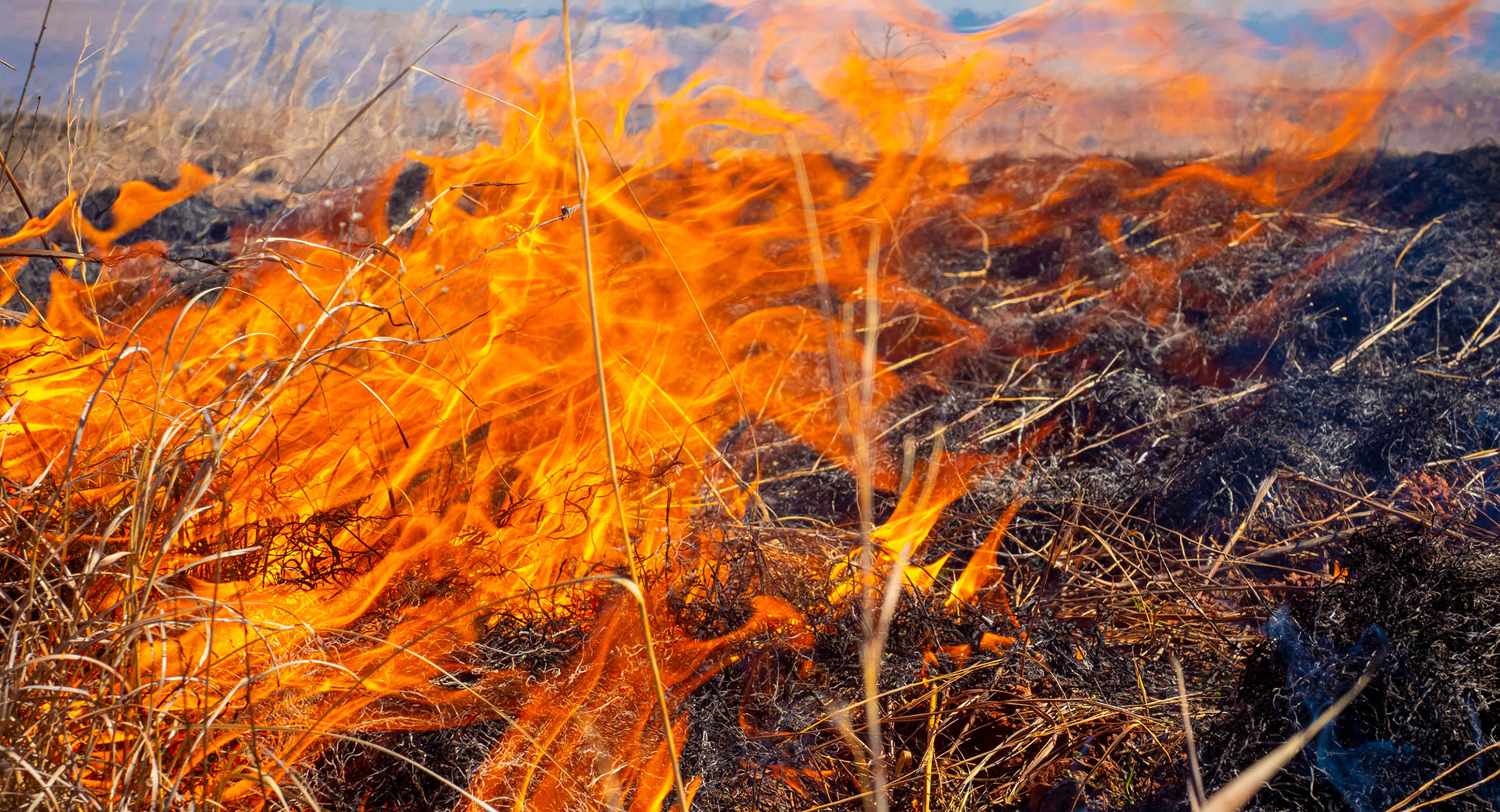
Emergency cattle nutrition strategies after a wildfire
Friday, March 1, 2024
Media Contact: Gail Ellis | Editorial Communications Coordinator | 405-744-9152 | gail.ellis@okstate.edu
Wildfire can leave a ranching operation without forage, requiring a sudden and radical change in management to maintain animals immediately after the event.
Fortunately, the ruminant animal is resilient and can adapt to a wide range of diet composition and feeding management levels. David Lalman, Oklahoma State University Extension beef cattle specialist, and Dana Zook, OSU Extension west district livestock specialist, suggest the stop-gap nutritional management strategies provided below. These alternatives are intended to minimize stress and weight loss in cases where standing forage or hay is limited or non-existent.
These emergency nutritional management programs are based on a limit feeding strategy because a) digestive upset and founder can occur when concentrate feeds are overfed to unadapted animals, and b) it is assumed the hay resource will be limited for the next several months until pasture green-up occurs. Limiting the amount of hay that is fed dramatically reduces hay waste and stretches the forage supply.
Strategy No. 1: Creep feed for four to five days
In cases where there is no forage immediately available, a low-protein, low-starch commercial feed product can be used for a short period to minimize weight loss until hay can be secured. Many commercial feed companies produce and inventory calf creep feeds or a growing ration/feed with similar characteristics. These products will generally contain around 12% to 14% protein and 8% to 12% crude fiber. Some of these feeds are pelleted and some are textured.
Another advantage of this program is that many companies keep an inventory of this type of feed bagged and ready to ship immediately. Feeds with these characteristics can be fed daily at around 0.6% of body weight to minimize weight loss in pregnant beef cows. This feeding rate is equivalent to 8 pounds of feed per day assuming cows weigh about 1,200 pounds. The low feeding rate is intentional because a sudden switch from free-choice forage to a grain (or concentrate) diet can result in digestive upset and founder. The risk is increased tremendously if the concentrate is overfed to animals that are not adapted.
Therefore, this program should be used no more than four or five days because weight loss will occur (due to the limited feeding rate), minerals will not be balanced, and the roughage component in the diet is not adequate to maintain long-term health of the cattle. The cattle should be fed every day and at about the same time each day. Weight loss should be limited to about 0.75 to 1 pound per day until hay or another forage source can be provided.
Once hay is available, priority should be given to providing enough long-stemmed hay to keep the rumen healthy and provide a balanced diet to sustain the animals until adequate spring forage is available. If hay supplies are limited, the inventory can be stretched by using a limit feeding strategy.
Strategy No. 2: Limited hay with creep feed
One method is to provide very limited hay (about 0.5% of body weight) plus about 1% of body weight concentrate feed like creep feed. Cattle must be fed both hay and concentrate every day. Be sure both feed sources are distributed far enough to allow all animals abundant access. Begin feeding about 8 pounds of concentrate, and gradually increase to 12 pounds.
If hay is more abundant, 15 pounds of grass hay fed with 5 pounds of a 28% to 32% range cube can maintain a 1,200-pound cow in the last trimester of pregnancy. Again, the hay should be rolled out to ensure each animal has equal opportunity to consume their share of the limited hay resource. The cattle must be fed every day, and again, it is recommended that cattle be fed about the same time each day.
In both cases, the priority is to meet nutritional needs while stretching the hay supply.
Mineral supplements and wheat pasture
Producers should consider working with their feed industry professional and/or Extension educator to ensure a well-balanced diet for their cattle. In most of these limit-feeding scenarios, a mineral supplement with a high level of calcium is essential to offset high levels of phosphorus in concentrate feeds. Wheat pasture mineral is a good option for this, but producers should also ensure that salt and vitamin A are also included in the diet. As always, a source of clean, fresh water is paramount to all other feed sources.
For more information, contact Dana Zook at dana.zook@okstate.edu or David Lalman at david.lalman@okstate.edu.
